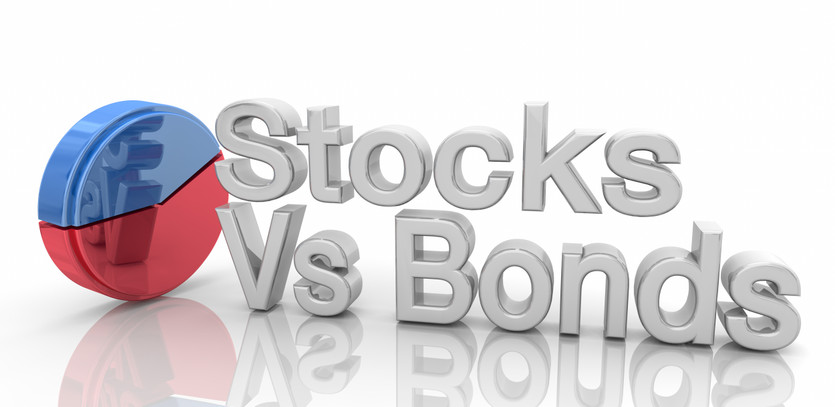Investing is a journey, a path to financial growth and security. Whether you're planning for retirement, seeking passive income, saving for a child's education, or even just taking pride in your investment accomplishments, making informed decisions is key. For newcomers to the investment world, two primary pathways are often considered: stocks and bonds. So, how does one navigate these two avenues to financial success?
Analyzing Stock and Bond Performance Over Time
A Comparative Study of History
Understanding historical trends is essential for future investment decisions. By examining the annual returns of the S&P 500 stocks and Baa-rated corporate bonds since 1928, we can discern patterns and insights.
Key Observations:
- Stocks and Bonds Balance: Crafting a balanced portfolio with both stocks and bonds can lead to returns that often outperform the average market.
- Risk vs. Reward: Your investment decisions must align with your risk tolerance and reward expectations.
- Tools for Judgment: Utilizing metrics like an investment's beta, standard deviation, charts, and the Sharpe ratio can help you evaluate the best assets for your financial goals.
Is Annual Return a Reliable Measure?
Beyond Surface Analysis
While a sea of blue in the comparison chart (indicating years when stocks outperformed bonds) might lure investors towards stocks, performance isn't the only criterion for success.
Investing Based on Time Horizon:
- Long-term Goals: If you are at the beginning or middle of your career, planning for retirement, or have over a decade before needing the funds, stocks may be appealing.
- Short-term Needs: Active traders seeking profits in a matter of days or weeks will approach investment differently.
The Significance of Rolling 10-Year Returns:
- Smoother Picture: Analyzing 10-year rolling returns provides a more nuanced view, often making bonds appear more attractive.
- Stability from Bonds: Bonds add a stabilizing element to your investment portfolio, protecting against sudden swings in stock prices.
Assessing Your Risk Tolerance
Understanding and assessing your risk tolerance is more than a simple calculation—it's a deeply personal reflection of who you are as an investor. Your ability to endure financial volatility, your investment goals, and your life stage all play into this vital aspect of financial planning. Here's how to thoughtfully and strategically approach risk tolerance:
A Personal Insight into Risk Tolerance:
-
Understanding Risk:
- Defining the Terms: What does risk mean to you? Is it potential loss, volatility, or something else?
- Risk vs. Uncertainty: Not all unknowns are risks. Distinguishing what you can measure and manage from true uncertainties is crucial.
- Types of Risks: Market risk, credit risk, and liquidity risk, among others, should all be understood and considered.
-
The Psychological Aspect:
- Emotional Responses: How do you react to market fluctuations? Do market dips cause anxiety?
- Cognitive Biases: Be aware of potential biases like overconfidence or loss aversion that may skew your risk perception.
-
Financial Capacity for Risk:
- Assessing Assets and Liabilities: Understanding your financial standing helps in determining how much risk you can afford to take.
- Income Stability: Your employment status and stability of income are crucial factors in risk assessment.
The 2020 Market Scenario: A Case Study
The financial upheaval of 2020 stands as a stark reminder of market volatility. How did you react? Analyzing your behavior during this turbulent period can provide valuable insights.
- Market Collapse and Recovery: A rapid fall followed by an almost equally swift recovery tested investors' nerves.
- Investment Decisions: Did panic lead to sell-offs, or were you calm and collected? These behaviors reflect risk tolerance.
Tools and Techniques for Assessing Risk
-
Questionnaires and Surveys:
- Professional Assessments: Many financial advisors use specialized tools to gauge your risk tolerance accurately.
- Self-Assessment: There are online tools designed to help you understand your risk profile.
-
Metrics and Measurements:
- Beta and Standard Deviation: These metrics help quantify investment risks.
- Sharpe Ratio: This ratio assists in understanding if the potential returns are worth the risks.
-
Scenarios and Simulations:
- Stress Testing: Creating hypothetical market scenarios to see how your portfolio would perform can be eye-opening.
Aligning Risk with Investment Strategy
Your risk tolerance should be the foundation of your investment strategy. Here's how to align the two:
- Diversification: Spreading investments across various assets can mitigate risks.
- Time Horizon: Investing for the long term may allow for more risk-taking compared to short-term goals.
- Regular Reviews: Your risk tolerance isn't static. Regularly reviewing and adjusting your investments to match your current risk profile is essential.
Conclusion: A Balanced Perspective
Risk tolerance is a complex, multifaceted concept that requires careful consideration. It's about knowing yourself, understanding the market, and having the courage and wisdom to align the two. Your risk tolerance is your financial fingerprint. Understand it, embrace it, and let it guide your investment journey.
As the poet John Lyly wisely observed, "All is fair in love and war." But in the world of investment, being fair and honest with yourself about your risk tolerance is the best strategy for success. Assess your risk, align with your goals, and achieve your dreams.
Measuring Risk and Return
The Science of Risk Assessment
Investment isn't mere speculation; it's a calculated decision based on measurable factors like beta and standard deviation.
Beta and Standard Deviation:
- Beta (Market Sensitivity): A tool for comparing an investment's volatility against the market.
- Standard Deviation (Consistency): A measure that depicts how steady or fluctuating the returns are.
Sharpe Ratio: Valuing Risk vs. Reward
- Understanding Risk and Return Together: The Sharpe ratio enables you to judge whether you're being justly rewarded for the risk you're taking. A ratio of 1 or above is optimal.
Understanding Asset Allocation
Asset Allocation is not just a buzzword in the financial world; it's the core of building a robust investment portfolio. By strategically distributing investments across various asset classes, you achieve diversification, reduce risks, and optimize returns. Let's delve into the nuanced art and science of asset allocation.
A Comprehensive Introduction to Asset Allocation:
-
Definition and Importance:
- What is Asset Allocation? It's the process of dividing investments among different categories such as stocks, bonds, cash, and alternatives.
- Why is it Vital? A well-balanced asset allocation strategy promotes long-term growth and cushions against market volatility.
-
The Building Blocks of Asset Allocation:
- Equities (Stocks): High risk, high reward, and best for long-term growth.
- Fixed-Income Securities (Bonds): Offers stability and predictable income.
- Cash or Cash Equivalents: Low risk and provides liquidity.
- Alternative Investments: Includes real estate, commodities, etc., for diversified risks and rewards.
Strategies and Styles of Asset Allocation:
-
Strategic Asset Allocation:
- A Long-term Plan: Focuses on meeting defined investment objectives.
- Regular Rebalancing: Ensures alignment with the initial risk and return profile.
-
Tactical Asset Allocation:
- Flexibility: Adjustments are made in response to market conditions.
- Opportunistic: Takes advantage of short-term market inefficiencies.
-
Dynamic Asset Allocation:
- Adaptive: Continuously adjusts asset mix based on market indicators.
- Requires Expertise: Best executed with professional insight.
Tailoring Asset Allocation to Individual Needs:
Understanding personal investment goals, risk tolerance, and time horizons is the cornerstone of effective asset allocation.
- Risk Profile: Aligning asset mix with personal risk tolerance.
- Investment Goals: Whether for retirement, education, or wealth accumulation, goals guide the allocation.
- Time Horizons: Short-term needs differ from long-term objectives, influencing allocation.
Leveraging Tools and Professional Guidance:
-
Model Portfolios and Prepackaged Funds:
- Accessibility: Offered by broker-dealers and mutual funds.
- Ease of Use: Pre-determined allocations cater to various risk profiles.
-
Professional Financial Advisers:
- Personalized Planning: Customized asset allocation strategies.
- Ongoing Management: Regular adjustments to keep the portfolio aligned.
The Art and Science of Asset Allocation
Asset allocation is both an art and a science, blending empirical analysis with intuitive judgment. A well-executed asset allocation strategy can be the difference between achieving financial dreams or falling short.
In the words of renowned investor Sir John Templeton, "Diversify. In stocks and bonds, as in much else, there is safety in numbers." Asset allocation provides that safety, that structure, that strategic edge. Embrace it as the framework for your investment success.
By aligning your investments with your life's goals and risk tolerance, asset allocation transcends mere number-crunching. It becomes a life map, guiding you towards financial prosperity and peace of mind.
Additional Resources and Professional Guidance
Investing in the financial world can be like navigating a vast and sometimes turbulent ocean. While we have explored various dimensions of investing, it's essential to recognize that continuous learning and professional guidance are your navigational tools in this journey. This concluding section offers a beacon of wisdom, resources, and answers to frequently pondered questions.
Educational Resources and Professional Guidance:
-
Educational Platforms:
- Regulatory Agencies: Websites such as Investor.gov, the Financial Industry Regulatory Authority (FINRA), and the Securities and Exchange Commission (SEC) offer in-depth guidance.
- Financial Services Industry: Many investment firms and banks provide extensive educational content.
-
Professional Financial Advisers:
- Why Consult an Adviser? Personalized guidance, tailored strategies, and ongoing portfolio management can be game-changers in your investment journey.
- Choosing the Right Adviser: Look for credentials, experience, and alignment with your investment philosophy.
-
Note of Caution: Remember that past performance is not indicative of future results. Investing involves risks, and professional advice should be sought to align with your specific needs.
Some Common Questions:
-
Do stocks or bonds get higher returns?
- Answer: Stocks usually offer higher returns but come with greater risk and volatility. Bonds are generally safer, providing more stable but often lower returns. It's the balance of risk and reward that guides investment decisions.
-
How do bonds affect the stock market?
- Answer: Bonds and stocks are interrelated. As stock prices fluctuate, investors often move between these two asset classes. Lower stock prices may drive investors toward the relative safety of bonds, while rising stock prices can attract them back to stocks for higher returns.
C. Final Thoughts and Encouragement:
Investing is a lifelong journey. It's a blend of art, science, intuition, and wisdom. The tools and resources mentioned here are but stepping stones in your financial adventure.
Embrace the learning, consult professionals when needed, and allow your understanding of stocks, bonds, risk, and asset allocation to grow and evolve. The path to financial success is seldom straight, but with the right knowledge and guidance, it's a path filled with potential and promise.
In the end, investing isn't just about numbers and graphs; it's about dreams, security, and the legacy you wish to create. Let the insights and answers in this article be your compass, guiding you towards a future rich in possibilities.
Happy Investing!





